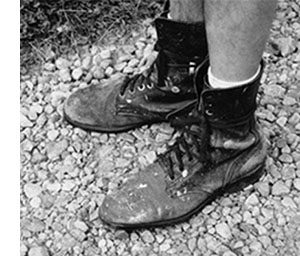INTERVIEW EXCERPT
Talking rust, road trips, and social engagement
with folksinger Ani DiFranco
JIM: If you try too hard to comment or are thinking of the commentary, it can drown out the artistic value of what’s going on. But, as Adrienne Rich pointed out...if you internalize an awareness, a political or philosophical awareness, it can find effective expression through your work even without your making a deliberate attempt. If you reflect on things like politics and social inequity, that awareness will work its way into the painting integrally. And striving for responsive engagement wherever one finds oneself – that's what I try for in painting, and that in itself is a kind of activism, a basic value.
I think my paintings at their best have a sort of existential drama going on between hope and despair, the struggle for meaning. Maybe that’s more basic than conveying political meaning, but to the extent that my paintings could also comment politically, I’d love that. But I have to trust that it will work its way into the process, rather than my setting out to do it.
ANI: Well, I guess I have a very broad idea of political. Not just news headlines. That was a really good sentence you said about the underlying existential questions in your work, and to me that has political resonance in and of itself. Even the way you approach a landscape, I think you’ve internalized it in that. For example, you’ve done pictures of the beautiful serene plains with the power lines, you know? Even the word power. It comes into mind when I look at it. And: look at how it transforms the landscape and look at how this land is not an end to itself but a means to our conveyance of power. It resonates whether you intend it or not. It’s not like you have to have a strategy. You were just awake and responding.
JIM: Simply staying awake and responsive is primary – for us as artists or citizens – and it can be a challenge, it’s going against the trend of the mainstream culture. Ideally paintings reflect a depth of engagement, and ideally they don't just stand on their own but contribute to a community’s sense of awareness and understanding… and beauty too, a reflective sense of what we’re living for.
ANI: Yeah yeah painting as part of the dialogue, not an individual monologue. That’s what I’m trying to do through my work, be part of a dialogue.
JIM: The dialogue is the crucial thing. So many painters I know would like to be part of a conversation, but settle for what we’ve been told, which is that “you’re painting for yourself, you’re expressing yourself.” The public seems disengaged, anyway, so why bother. One of the reasons I forced myself to go out on the road was curiosity about this – to find out how can I be a painter of little paintings and still be part of a bigger dialogue. That’s so important. How can I stand up for the relevance of this humble and contemplative pursuit in today’s world?
It's funny – I always thought being private and withdrawn was the artist’s prerogative, maybe even a necessity. I liked keeping to myself. Then I noticed that everyone else was doing that, staying at home and watching TV, or on the computer. I figured I couldn’t complain about the decline of community spirit if I wasn’t making any effort to contribute. Also, it struck me that at times when the social fabric is breaking down, maybe artists need to take initiative in doing the opposite. I realize that's idealistic, but we are creative problem solvers. Maybe we can turn our creative thinking and connection-making to the world beyond the canvas.
ANI: ...That’s something I’ve been trying to communicate to people. The process of leaving your house and engaging with people and giving your energy to something bigger than yourself… And you do it to make yourself happier. Yes, you do it to make the world a better place, but trust me, you also make your world a better place. I think if people really knew that they might be more attracted to the hard work of it.
. . .
Musical (and visual) artist Ani DiFranco's folksinger life provided key inspiration for the Itinerant Artist Project when I was developing the idea in the 1990s. And she was one of my hosts in Buffalo, NY, on my first art tour, in 2000. Check out her amazing work at RighteousBabe.com.
Order the Great Lakes Review here, or ask your local bookstore.
